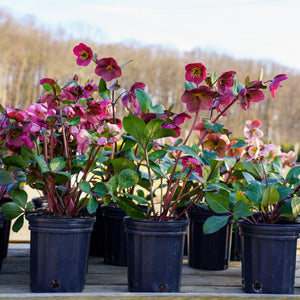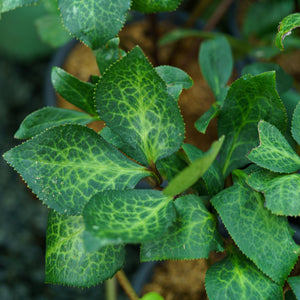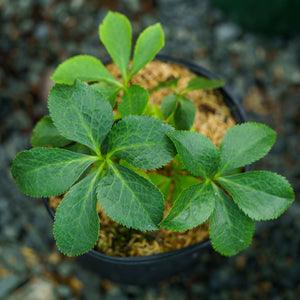The Helleborus Guide
Helleborus, commonly known as hellebores or Lenten roses, are prized for their elegant, nodding flowers and their rare ability to bloom in late winter to early spring, often pushing through snow and frozen soil. With evergreen or semi-evergreen foliage, hellebores offer year-round texture and interest, making them essential plants for shaded gardens, woodland borders, and early-season color.
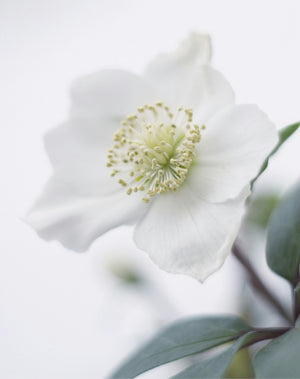
About
Hellebores belong to the Ranunculaceae family and include a wide range of hybrids and species that thrive in cool, temperate climates. They are clump-forming perennials that typically reach 12–24 inches in height and spread, forming dense colonies over time.
Their flowers, which resemble old-fashioned roses, come in shades of white, green, pink, purple, and near-black, often with intricate speckling, picotee edges, or ruffled petals. Popular cultivars include:
- Helleborus x Frostkiss 'Anna’s Red' and 'Penny’s Pink' – Richly colored blooms with marbled foliage.
- Helleborus 'Confetti Cake' and 'Romantic Getaway' – Eye-catching doubles with strong stems.
- Helleborus x iburgensis 'Dorothy's Dawn' and 'Bayli’s Blush' – Compact hybrids known for their vibrant flowers and unique foliage.
- Helleborus x glandorfensis 'Ice N' Roses' – Bred for vigor, bloom coverage, and longevity.
- Helleborus niger 'Mont Blanc' – A refined white-blooming Christmas rose.
- Helleborus orientalis 'Brandywine' and 'Royal Heritage' – Classic selections with genetic diversity and strong garden performance.
These plants are treasured not only for their bloom timing but also for their ability to brighten shaded spots and pair with other early risers.
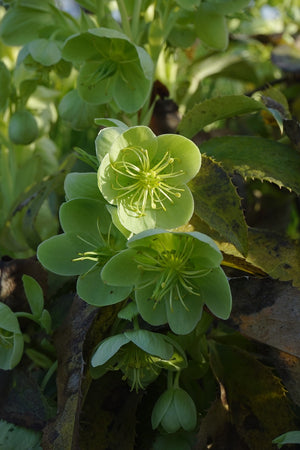
PLANTING
ellebores establish best when planted in the right site and given time to settle in before winter:
- USDA Hardiness Zones: Most hellebores are hardy in Zones 4–9, depending on variety.
- Soil: Rich, well-drained soil with plenty of organic matter. Slightly alkaline to neutral pH is ideal.
- Sunlight: Partial to full shade. Tolerates morning sun but avoid hot afternoon exposure.
- Spacing: Plant 18–24 inches apart to allow room for mature clumps.
- Planting Time: Early spring or fall is best for establishing healthy root systems before extreme weather.
Amend soil with compost and mulch annually to retain moisture and improve texture.

CARE
Once established, hellebores are incredibly low-maintenance, thriving with little intervention:
- Watering: Water regularly during the first season. Once established, hellebores are drought tolerant but appreciate deep, infrequent watering during dry periods.
- Pruning: In late winter, remove any tattered or old leaves just before new blooms appear to showcase flowers and reduce fungal risk.
- Fertilizing: Apply compost or a slow-release balanced fertilizer in early spring.
- Dividing: Hellebores can be divided in early fall or after flowering in spring, but they resent disturbance. Divide only when necessary.
- Pests & Diseases: Rarely affected by pests. Black spot and crown rot can occur in overly wet or crowded conditions. Provide airflow and avoid overhead watering.
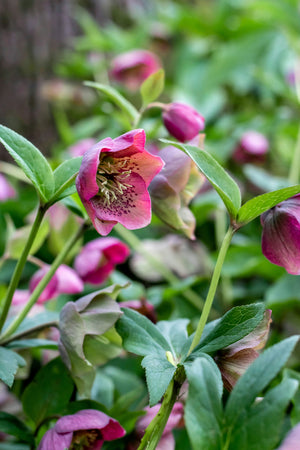
HOW TO USE
Hellebores are a versatile cornerstone in shade and woodland gardens, providing structure and off-season interest:
- Woodland Borders: Pair with early spring bulbs, ferns, epimedium, or brunnera.
- Shade Gardens: Combine with astilbe, hosta, or bleeding hearts for multi-season interest.
- Winter Containers: Use frost-tolerant varieties in cold-weather planters.
- Underplanting: Excellent under deciduous shrubs or trees that allow winter light.
- Cut Flowers: Long-lasting in floral arrangements; sear stems to extend vase life.
Hellebores pair beautifully with other winter-early spring bloomers like snowdrops, pulmonaria, and cyclamen.
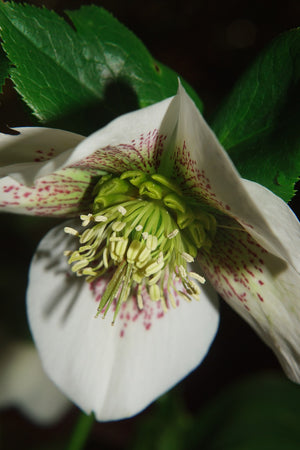
COMMON QUESTIONS
- Is helleborus a perennial? Yes, hellebores are long-lived perennials that return each year and often form expanding clumps.
- Is helleborus toxic to cats? Yes, all parts of the plant are toxic if ingested and can cause digestive upset.
- Is helleborus toxic to dogs? Yes, hellebores are toxic to dogs and should be planted out of reach of pets that may chew.
- How to prune helleborus? Remove old, damaged foliage in late winter before flowers emerge. Avoid cutting back the plant completely.
- Are hellebores deer resistant? Yes, hellebores are highly deer resistant due to their leathery leaves and toxic compounds.
- Are hellebores drought tolerant? Once established, they are fairly drought tolerant, though they perform best with regular moisture.
- Can hellebores be divided? Yes, though they prefer not to be disturbed. Divide mature clumps every few years in spring or early fall if necessary.
Conclusion
Hellebores bring elegance, resilience, and early-season color to shaded gardens and containers. With their evergreen foliage, deer resistance, and ability to bloom through winter’s chill, hellebores bridge the seasons and provide critical interest when few other plants are active. Whether you’re planting a woodland sanctuary or a refined border display, hellebores are a timeless addition with lasting value.
The Helleborus Collection
Sold Out
Sold Out

